Of all the places I’ve been, those with waterfalls impress me the most. I think one day, science will prove that there’s verifiable therapy when water rushes down through space to splash on rocks. Air ionization or something. Whether its a lone ribbon of spray cascading down a jungle cliff or a massive torrent such as Iguazú, it’s always a treat to stand near a waterfall, appreciate its beauty, and inhale. Some people chase sunsets. I chase waterfalls.
I was lucky enough to visit Iguazú Falls, known in Spanish as Las Cataratas del Iguazú and in Portuguese as Foz de Iguaçu, on a trip researching the Argentina book for my amazing publisher, Lonely Planet. It was the midpoint of a to-from drive out of Córdoba, and along the way I saw incredible wildlife, amazing vistas, and met some great locals.
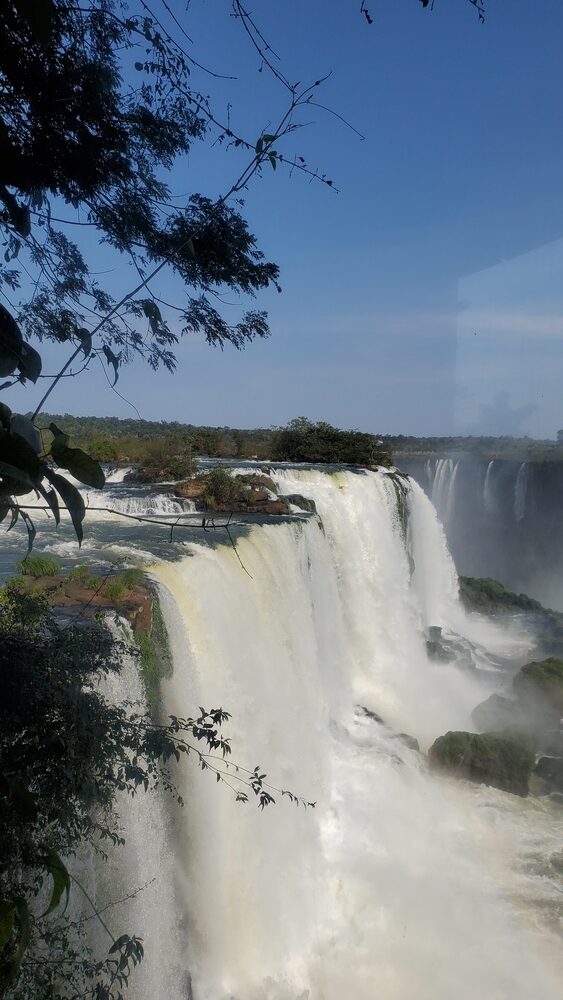
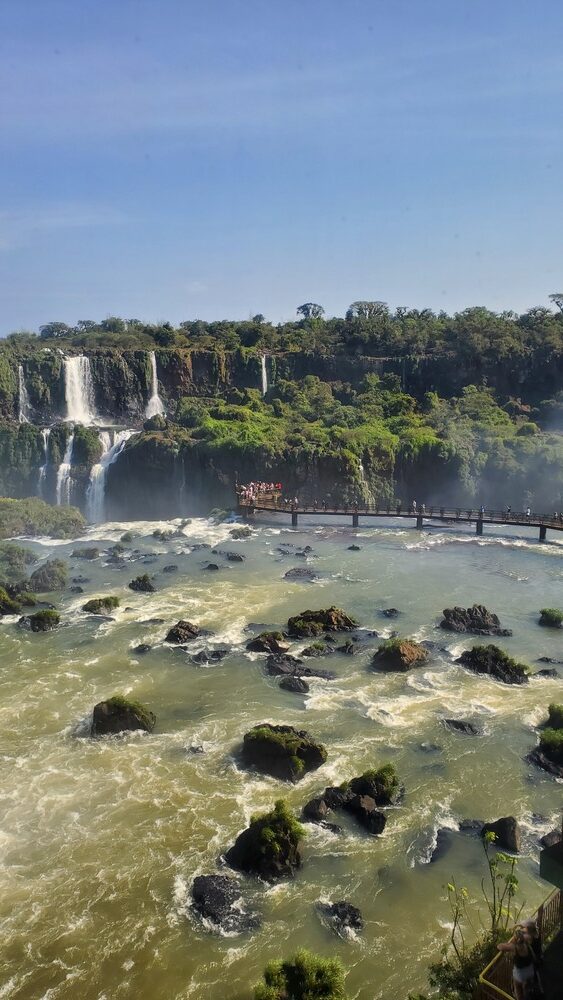

Here are things any visitor in 2024 should know about this incredible spot, the waterfall, and the border towns surrounding it.
Quick stats:
- This is the second largest waterfall in the world (by some measurement), second in curtain only to Victoria Falls, in Zimbabwe.
- Both the Argentinian and Brazilian sections of Iguazú National Park are UNESCO World Heritage Sites.
- Iguazú Falls is made up of around 275 individual waterfalls, stretching almost 1.7 miles (2.7 km) in length.
- The most famous and powerful part of the falls is called the “Garganta del Diablo” (Devil’s Throat), a U-shaped drop about 269 feet (82 meters) high.
- Iguazú Falls is approximately three times taller than Niagara Falls.
- “Iguazú” comes from the native Guarani language, where “y” means “water” and “guasu” means “big” — literally, “Big Water.”
- According to local folklore, the falls were created when a deity, enraged that a woman he loved escaped downriver in a canoe with her human lover, split the river in two to form the falls.
1. The Argentine side and Brazil side are very different, so be sure to do both.
I can’t stress this part enough: You’ll want to budget enough time to visit both sides of Iguazú Falls, ideally by spending at least a night there on either the Argentine or Brazilian side.
How are they different?
The Argentine side is a much longer walk, with the bus dropping you off as much as a mile away from the start of the boardwalk. You’ll end up walking a long way over the river on a boardwalk, finally reaching the falls and being able to peek over its edge near a large Argentine flag. If that sounds tedious, it’s not: It’s a delightful walk, forested much of the first part, and when you reach the water you may see turtles, frogs, herons, and other riparian life.
The Brazil side has easier access, and thus, more people. There are handicap-accessible elevators that those with mobility issues can avail themselves of, and walkways (sometimes slippery) are well maintained. You get a more visceral view of the falls on this side, as one upper waterfall cascades directly behind the walkway, which extends out over a cliff to another precipice, over which the rest of the water plunges. I found myself realllllly hoping that the engineers had calculated the weights of the visitors and the strength of those pilings correctly.
2. There’s abundant wildlife.
You’ll likely have your camera or phone out, but don’t just look at the falls. There’s all sorts of birds to see, including keel-billed toucans, hummingbirds, and other avian friends, as well as monkeys and coatis, especially on the Argentine side.
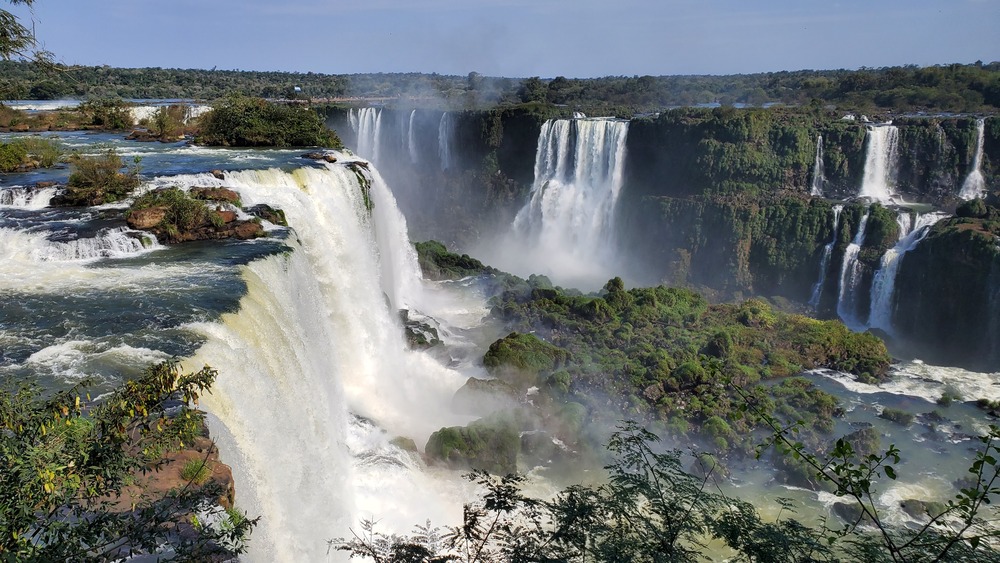
3. You’ll get wet, so plan for it.
Even on the sunniest of days (the ideal viewing condition, as rainbows stretch the entire width of the river, just spectacular!), there’s so much mist being churned up that you will get wet. Your clothes will get wet. Your camera and phone will get wet. Umbrellas are of some help but as the mist is generated from the rocks not falling from above, it’s likely that you’ll get wet even carrying an umbrella. The best is waterproof clothing or a plastic rain poncho (available at usurious prices from the gift shop).
4. Hope for a sunny day.
Nothing will make a trip here bad, but if you’re able to budget enough time to ensure a visit on the sunniest of days, you’ll be glad you did. It’s truly priceless. If you need convincing, take another look at my photos. I couldn’t have been happier.
5. There’s more to do than just the falls.
Many people dash to the falls from Buenos Aires, take a photo, and turn right around and go back, some even trying to do this in a day trip. Don’t overlook the other fun activities that are out here. There’s a spot where you can stand in three countries at once (appropriately called “Tres Fronteras” (Three Borders)). There is a wildlife rescue center, the Güirá Oga, where you can get up close with some of the jungle’s wildest creatures: Jaguars, tapirs, ocelots, pumas, and many species of birds, all rescued and there at the center because they no longer can survive in the wild. For instance, a toucan whose wings were cut by a drug dealer who had it as a pet. On both sides of the falls there are restaurants and nightlife, though the Brazilian side is probably more vibrant at this time. Take your time here, you won’t regret it.
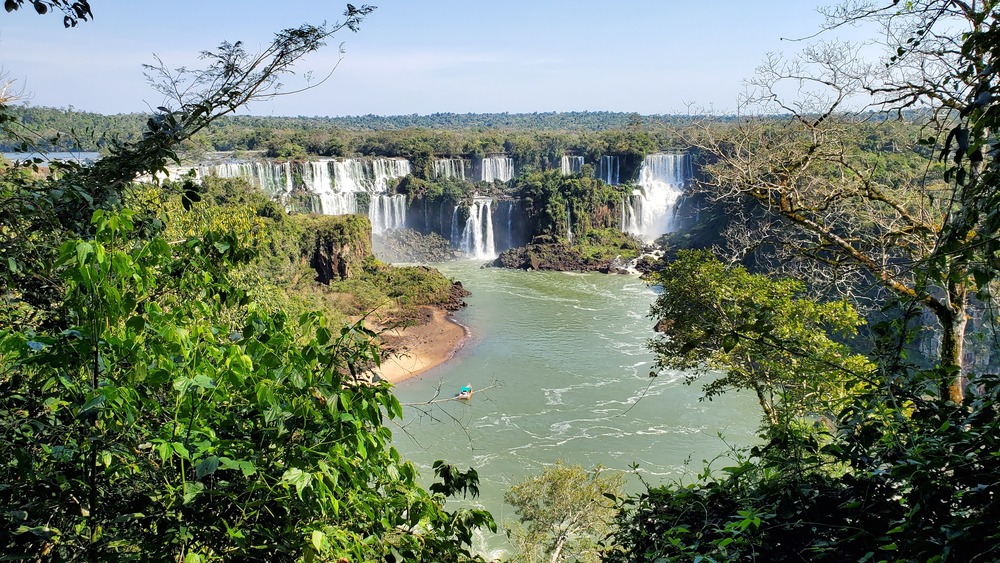
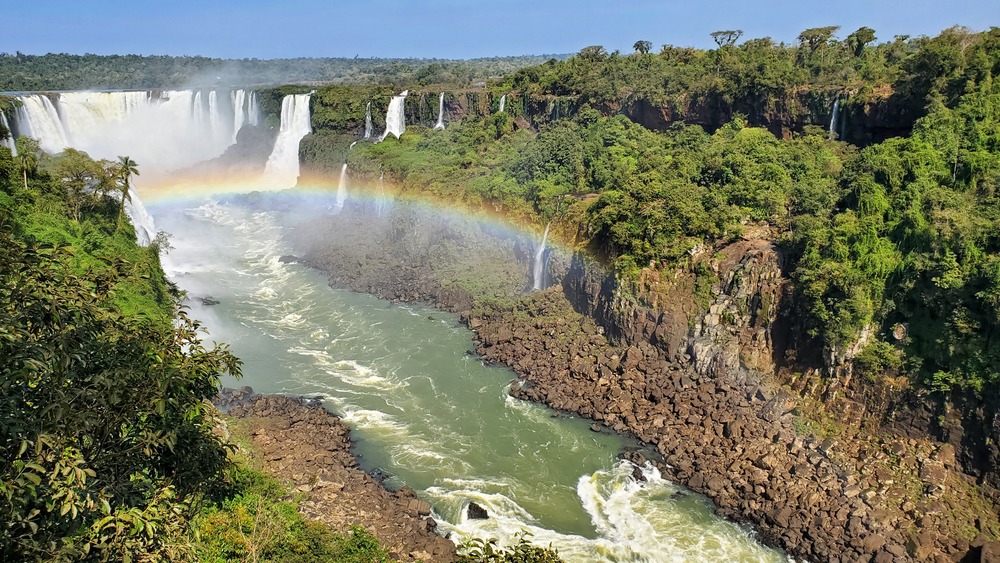
Leave a Reply